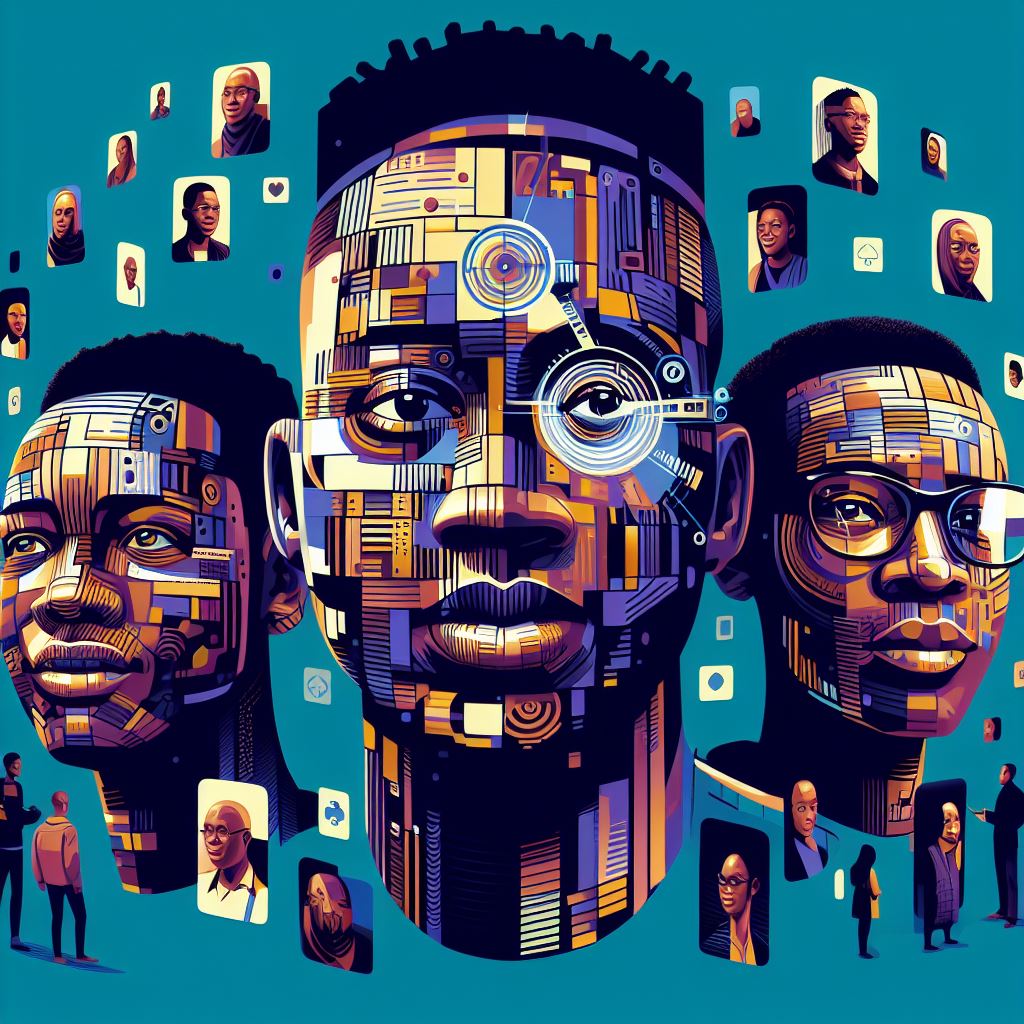Introduction
Data visualization refers to the graphical representation of data to aid understanding and analysis.
Data visualization offers numerous benefits to businesses in Nigeria, including improved decision-making and communication.
Python is essential in data visualization as it provides a wide range of libraries and tools.
These libraries, such as Matplotlib and Seaborn, enable businesses to create interactive and informative visualizations.
Python’s flexibility and ease of use make it a popular choice for data visualization projects.
Visualizing data allows Nigerian businesses to identify trends, patterns, and outliers more effectively.
It enables them to present complex information clearly and concisely to stakeholders.
Data visualization also enhances data-driven storytelling and helps businesses make data-informed decisions.
By using Python for data visualization, Nigerian businesses can streamline their operations and gain a competitive edge.
It enables organizations to extract actionable insights from their data and drive business growth.
Adopting data visualization techniques in Nigerian businesses is crucial for staying ahead in today’s data-driven economy.
Understanding Python for Data Visualization
In this section we will delve into the fundamentals of using Python for data visualization, exploring the basic concepts, programming language, and commonly used libraries.
Brief Overview of Python Programming Language
Python is a high-level programming language known for its simplicity and readability.
It has gained significant popularity in the data science and analytics community due to its extensive libraries and ease of use.
Python is an interpreted language, which means it does not require compilation before execution. This allows for rapid development and quick testing of data visualization code.
Unlock Your Unique Tech Path
Get expert tech consulting tailored just for you. Receive personalized advice and solutions within 1-3 business days.
Get StartedFurthermore, Python provides a wide range of data manipulation and analysis tools, making it a preferred choice for businesses that deal with large datasets.
Python Libraries Commonly Used for Data Visualization
Python offers several libraries that are highly efficient and extensively used for data visualization. These libraries provide a wide range of tools and functionalities to create visually appealing and interactive plots.
Some of the commonly used libraries for data visualization in Python are:
- Matplotlib: Matplotlib is a versatile library that allows for the creation of static, animated, and interactive visualizations.
- Seaborn: Seaborn is built on top of Matplotlib and provides a higher-level interface for creating attractive and informative statistical graphics.
- Plotly: Plotly offers a comprehensive set of tools for creating interactive visualizations, including charts, maps, and dashboards.
These libraries provide various plotting functions and customizable options for creating different types of visualizations, such as line plots, scatter plots, bar charts, histograms, and more.
Introduction to Popular Python Libraries
Let’s now delve deeper into some of the popular Python libraries for data visualization.
Matplotlib
Matplotlib is one of the most widely used libraries for data visualization in Python. It provides a comprehensive collection of functions for creating static, animated, and interactive plots.
With Matplotlib, you can create a wide range of plots, such as line plots, scatter plots, bar charts, histograms, and heat maps.
It also allows for customizing the appearance of plots, adding labels, legends, and annotations.
Seaborn
Seaborn is built on top of Matplotlib and offers a higher-level interface for creating aesthetically pleasing statistical graphics.
It simplifies the process of creating complex visualizations, such as multi-plot grids and categorical plots.
Seaborn provides several predefined themes and colour palettes to enhance the visual appeal of plots. It also offers built-in statistical estimation and visualization functions, making it ideal for exploratory data analysis.
Plotly
Plotly is a powerful library that specializes in creating interactive visualizations. It provides a wide range of chart types, including line charts, scatter plots, box plots, 3D plots, and geospatial maps.
With Plotly, you can create interactive dashboards that allow users to explore and analyze data dynamically.
It also supports online collaboration and sharing of visualizations, making it suitable for collaborative projects and presentations.
Unlock Premium Source Code for Your Projects!
Accelerate your development with our expert-crafted, reusable source code. Perfect for e-commerce, blogs, and portfolios. Study, modify, and build like a pro. Exclusive to Nigeria Coding Academy!
Get CodeThese libraries are just the tip of the iceberg in terms of what Python has to offer for data visualization.
With a strong foundation in Python and knowledge of its libraries, Nigerian businesses can unlock valuable insights from their data.
In the next section, we will explore the basics of Matplotlib and learn how to create various types of plots using this powerful library.
Read: Automating Excel Tasks with Python: A Nigerian Perspective
Basic data visualization techniques in Python
Data visualization is a crucial aspect of analyzing and understanding business data. It allows Nigerian businesses to visually represent complex information and patterns in a way that is easy to comprehend.
In this section, we will explore some fundamental techniques for data visualization in Python.
Creating line plots and scatter plots
Line plots and scatter plots are two commonly used visualization techniques in Python. A line plot displays data points connected by lines, whereas a scatter plot represents individual data points as dots on a graph.
To create a line plot or scatter plot, we can use Python libraries such as Matplotlib or Seaborn. These libraries provide a range of functions and options to customize the appearance and style of the plots.
Customizing plots with titles, labels, and legends
Adding titles, labels, and legends to plots is essential for providing context and understanding to the viewer.
Titles describe the primary purpose of the plot, while labels help identify the variables represented on the x and y axes.
In Python, we can use functions like plt.title(), plt.xlabel(), and plt.ylabel() to add titles and labels to our plots.
Additionally, we can use plt.legend() it to create a legend that explains the different elements of the plot.
Adding colours and markers to plots
Colours and markers can enhance the visual appeal and readability of plots. Python provides a wide variety of options to customize the colours and markers of data points, lines, and other plot elements.
We can specify colours using colour names, RGB values, or hexadecimal codes. Similarly, markers can be customized using symbols such as dots, triangles, or squares.
These customization options can be easily implemented using functions like plt.color() and plt.marker().
Exploring different types of charts (e.g., bar charts, pie charts)
Besides line plots and scatter plots, Python offers several other types of charts to represent different types of data effectively. Some commonly used chart types include bar charts, pie charts, and histograms.
A bar chart displays categorical data as rectangular bars, while a pie chart represents the proportion of different categories as slices of a circle.
Histograms, on the other hand, show the distribution of continuous data by dividing it into intervals.
To create these charts in Python, we can utilize libraries such as Matplotlib and Seaborn.
These libraries provide dedicated functions like plt.bar(), plt.pie(), and plt.hist() for generating bar charts, pie charts, and histograms, respectively.
In summary, Python offers a wide range of data visualization techniques that can greatly benefit Nigerian businesses.
By mastering these techniques, businesses can effectively communicate and analyze their data, leading to more informed decision-making and improved overall performance.
Read: The Importance of Learning Coding in Nigerian Schools

Advanced data visualization techniques in Python
Data visualization is a powerful tool that helps businesses interpret and analyze data effectively.
In the context of Nigerian businesses, Python provides a range of advanced data visualization techniques that can revolutionize the way data is presented and understood.
One of the most exciting features of Python for data visualization is its ability to create interactive visualizations using Plotly.
Plotly
Plotly is a library that allows users to build interactive charts and dashboards, which can be embedded in web applications.
These visualizations not only make data more engaging but also enable users to explore and interact with the data in real time.
Seaborn
Seaborn is another powerful library in Python that specializes in statistical graphics. It provides a high-level interface for creating informative and visually appealing plots.
With Seaborn, Nigerian businesses can easily generate various statistical visualizations such as scatter plots, histograms, heat maps, and more.
These visualizations aid in uncovering patterns, trends, and correlations within the data, leading to data-driven insights.
Python also offers excellent capabilities for visualizing geographical data, which can be crucial for Nigerian businesses operating across different regions.
Folium and GeoPandas
Libraries like Folium and GeoPandas enable businesses to create maps, plot spatial data, and visualize geographic patterns.
By visually representing data on a map, businesses can identify geographical trends, target specific regions for marketing campaigns, and make informed decisions based on the geographic context.
Creation of animated visualizations using Matplotlib
In addition to static visualizations, Python enables the creation of animated visualizations using the Mmatplotliblibrary.
Animated visualizations can be highly effective in conveying changes over time or illustrating dynamic processes.
Nigerian businesses can leverage this capability to show the evolution of key metrics, demonstrate market trends, or present data-driven stories in a more engaging and captivating manner.
By harnessing advanced data visualization techniques in Python, Nigerian businesses can gain a competitive edge.
Visualizing data in a meaningful and intuitive way helps stakeholders understand complex information quickly, leading to more informed decision-making.
Python enables businesses to maximize their data potential through interactive, statistical, geographical, and animated visualizations using various libraries.
In general, Python offers a diverse set of data visualization techniques that can greatly benefit Nigerian businesses
By using Plotly, Seaborn, and Matplotlib, businesses can create interactive, statistically sound, and visually captivating visualizations.
Additionally, Python’s ability to visualize geographical data can help businesses make informed decisions based on the geographic context.
Embracing these advanced data visualization techniques in Python can transform how Nigerian businesses interpret and communicate data, leading to improved decision-making and ultimately, business success.
Read: Coding 101: What it Means and Why it Matters
Best practices for effective data visualization in Nigerian businesses
Data visualization is a powerful tool that allows Nigerian businesses to understand and communicate complex information effectively. However, to harness its full potential, it is important to follow best practices.
One of the key aspects of effective data visualization is choosing the right visualization for the data at hand. Different types of data require different types of visualizations.
For example, if you want to show trends over time, a line chart might be appropriate, while a bar chart is useful for comparing different categories.
Design Principles
Design principles play a crucial role in creating clear and compelling visualizations. It is important to keep the design simple and uncluttered.
Avoid using too many colours or unnecessary elements that could distract from the main message. Use colours effectively to highlight important information or to represent different categories.
Applying storytelling techniques to data visualization
Data visualization should not only present data but also tell a story.
By organizing the data in a logical and meaningful way, you can create a narrative that engages the audience and helps them understand the insights behind the numbers.
This storytelling approach makes the visualization more impactful and memorable.
Ensuring Accessibility and Inclusivity
Accessibility and inclusivity should be considered when designing visualizations. Not all audience members may have the same level of familiarity with data or understanding of visualizations.
It is important to ensure that the visualization is accessible and understandable to a diverse range of people.
This can be achieved by using clear labels, providing explanations or legends, and avoiding jargon or technical language.
In short, effective data visualization in Nigerian businesses requires following best practices.
Choosing the right visualization, adhering to design principles, applying storytelling techniques, and ensuring accessibility are all essential factors.
By implementing these practices, businesses can effectively communicate insights, make informed decisions, and drive success.
Read: Understanding the Basics of Coding: A Guide for Nigerians
Real-world examples of Python data visualization in Nigerian businesses
Data visualization is a powerful tool that has transformed the business landscape in Nigeria.
By using Python for data visualization, Nigerian businesses have been able to gain valuable insights, make informed decisions, and improve their communication and reporting.
Case studies of successful data visualization projects
Several Nigerian businesses have successfully implemented data visualization projects using Python. These projects have had a significant impact on their growth and success. Here are a few examples:
Retail industry
A leading retail chain in Nigeria used Python data visualization to analyze customer buying patterns.
By visualizing sales data, they were able to identify popular products and optimize their inventory management, resulting in increased sales and customer satisfaction.
Finance sector
A Nigerian bank used Python data visualization to analyze their loan portfolio.
By visualizing loan data, they were able to identify high-risk borrowers and implement proactive measures to minimize default rates and improve profitability.
Healthcare sector
A Nigerian hospital used Python data visualization to monitor patient wait times.
By visualizing data, they were able to identify bottlenecks in their processes and make improvements, significantly reducing patient wait times and enhancing overall patient experience.
Examples of how data visualization has improved decision-making
Data visualization has empowered Nigerian businesses to make data-driven decisions. Here are two notable examples:
Marketing strategy
A Nigerian e-commerce platform used Python data visualization to analyze customer behaviour and preferences.
By visualizing data on a user-friendly dashboard, they were able to tailor their marketing strategies and promotions, resulting in increased customer engagement and higher conversion rates.
Supply chain management
A Nigerian manufacturing company used Python data visualization to analyze their supply chain performance.
By visualizing data on delivery times, production rates, and inventory levels, they were able to identify inefficiencies and optimize their supply chain, leading to cost savings and improved productivity.
Impact of data visualization on communication and reporting in Nigerian businesses
Data visualization has revolutionized communication and reporting practices in Nigerian businesses.
Here’s how:
Improved clarity
By presenting complex data in visual formats such as charts and graphs, Python data visualization has made it easier for businesses to communicate their findings and insights to stakeholders.
Enhanced accessibility
Python data visualization has made data more accessible to a wider audience, including non-technical stakeholders.
This has facilitated better collaboration and decision-making across all levels of the organization.
Increased engagement
Visualizing data interactively and engagingly has improved stakeholder engagement and participation. This has resulted in better-informed discussions and more effective problem-solving.
Streamlined reporting
Python data visualization has automated the process of generating reports, saving time and effort for Nigerian businesses.
This has allowed them to focus on analyzing insights and taking action instead of spending valuable resources on manual report creation.
Python data visualization has become a game-changer for Nigerian businesses.
Through real-world examples, case studies, and the impact it has had on decision-making, communication, and reporting, we can see the immense value it brings.
As more businesses embrace the power of Python data visualization, we can expect even greater innovation and success in the Nigerian business landscape.
Conclusion and Next Steps
As we conclude this post on Python data visualization for Nigerian businesses, it is important to recap the importance and benefits of utilizing these techniques.
Data visualization enables businesses to gain valuable insights from their data, identify trends, and make data-driven decisions.
Python offers a wide range of tools and libraries that make visualization efficient and effective.
By visualizing data, Nigerian businesses can easily communicate complex information to stakeholders, including investors, employees, and customers, fostering better understanding and collaboration.
We encourage Nigerian businesses to explore further and apply data visualization techniques within their business contexts.
Start by identifying what data you want to visualize and consider the specific questions or problems you want to address.
There are numerous resources and references available to learn more about Python data visualization:
- Online tutorials and courses on websites like DataCamp, Coursera, and Udemy offer in-depth learning experiences.
- Books such as “Python for Data Analysis” by Wes McKinney provide comprehensive guidance.
- Python libraries like Matplotlib, Seaborn, and Plotly have extensive documentation and online user communities to support learning and troubleshooting.
By investing time and effort into mastering data visualization techniques, Nigerian businesses can enhance their decision-making processes and gain a competitive edge in their industries.
So don’t hesitate, to start exploring and visualizing your data today!




